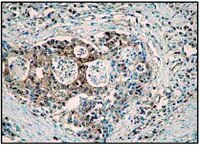APT428 Sigma-AldrichCaspaTag Caspase 8 In Situ Assay Kit 25, Fluorescein
The CaspaTag Caspase-8 In Situ Assay Kit, Fluorescein for flow cytometry is a fluorescent-based assay for detection of active caspase-8 in cells undergoing apoptosis.
More>> The CaspaTag Caspase-8 In Situ Assay Kit, Fluorescein for flow cytometry is a fluorescent-based assay for detection of active caspase-8 in cells undergoing apoptosis. Less<<Recommended Products
Overview
| Replacement Information |
|---|
Key Spec Table
| Species Reactivity | Key Applications | Detection Methods |
|---|---|---|
| Ma | FC, ACT | Fluorescent |
| References |
|---|
| Product Information | |
|---|---|
| Components |
|
| Detection method | Fluorescent |
| Quality Level | MQ100 |
| Physicochemical Information |
|---|
| Dimensions |
|---|
| Materials Information |
|---|
| Toxicological Information |
|---|
| Safety Information according to GHS |
|---|
| Safety Information |
|---|
| Packaging Information | |
|---|---|
| Material Size | 25 assays |
| Transport Information |
|---|
| Supplemental Information |
|---|
| Specifications |
|---|
| Global Trade Item Number | |
|---|---|
| Catalogue Number | GTIN |
| APT428 | 04053252514074 |
Documentation
Brochure
| Title |
|---|
| Advancing cancer research: From hallmarks & biomarkers to tumor microenvironment progression |









